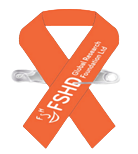FSHD stem cells: revolutionising research
A human cell model of facioscapulohumeral dystrophy provides valuable insight into this condition and an essential tool for drug discovery.
One of the most important tools for biomedical research is the existence of cell and animal models that closely resemble the human condition being studied. A good animal or cell model will produce results that are applicable to people and will advance the search for treatments and a cure. A poor animal model can give you misleading results wasting time and money.
So much research fails because of poor models. Unlike many human conditions FSHD does not have readily available cell and animal models. However, work performed by a group of scientists at Genea Biocells, and supported by research funding from FSHD Global, has changed this. This group has developed FSHD stem cells that are able to mimic FSHD inside a culture dish.
What is a stem cell?
A stem cell is basically a cell that can turn into multiple different types of cells. Embryonic stem cells are those cells in the early embryo which divide to create a full organism. The adult body also has stem cells such as those in bone marrow which are continuously dividing to create the multiple cells in blood.
The stem cells created by Genea are being used as a renewable source of mature FSHD skeletal muscle cells that can be studied in laboratories around the world.
Leslie Caron from Novogen was the lead author on the study she says “Our study demonstrate disease-specific phenotypes in muscle derived from both human embryonic and induced pluripotent stem cells affected with FSHD. These cells represent a scalable resource that provides many advantages over invasive patients biopsies and provides an invaluable tool for drug screening and the development of new therapies against FSHD.
This study may also provide new insight into FSHD pathology. As these cells are embryonic in nature, they allow the identification of new pathways associated with the early stages of the disease.”
The potential for these cells to help us better understand the biology of FSHD and fast-track drug discovery is certainly exciting.
The paper is published in the Journal Stem Cells Translational Medicine and is available here




